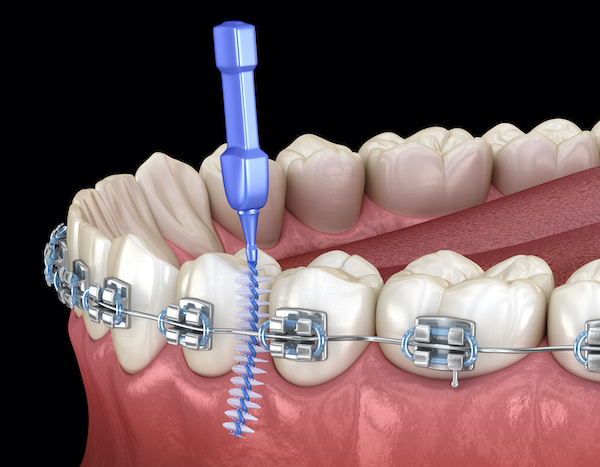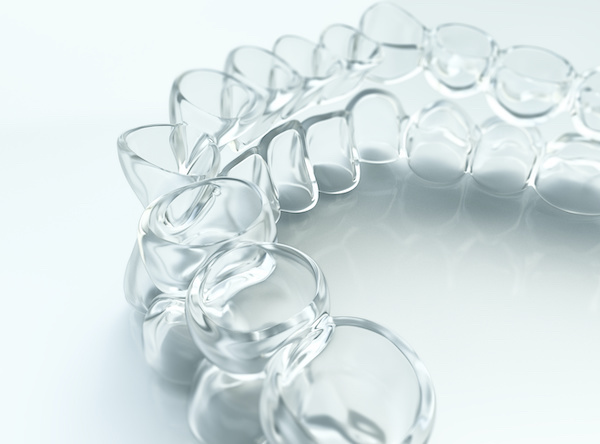Orthodontist (Braces vs. Clear Aligners)

Choosing between traditional braces and clear aligners is a pivotal decision for anyone yearning for a straighter smile.
Braces, with their robust design, have long been the standard for correcting dental misalignments.
Clear aligners, on the other hand, offer a subtle and modern approach to orthodontics.
This contrast presents a crossroads of considerations such as aesthetics, comfort, and lifestyle compatibility.
Understanding Orthodontics
An orthodontist can be a valuable and experienced member of your dental health team.
While general dentists must complete four years of dental school and pass their board exam, some dentists go on for another two to three years to specialize in orthodontics.
It may even take up to 10 years to achieve their complete board certifications.
Orthodontists correct malocclusion and skeletal abnormalities by applying various forces on teeth and supporting bone structures. General dentists and orthodontists map out a treatment plan for their mutual patients.
The general dentist is the first line of defense when recognizing alignment issues. If a problem is spotted, the general dentist will refer the patient to a trusted orthodontist for consultation and subsequent treatment.
Orthodontics For Children?
According to the American Association of Orthodontists, children are advised to have an orthodontist check-up for an orthodontic problem or no later than age 7 for remaining children.
At this stage, the child has enough permanent teeth for the orthodontist to determine any issues or recognize if a problem is developing.
Early treatment is in the patient’s best interest, especially if the situation could become more severe over time. For example, if expanding the upper jaw is needed to correct misalignment compared to the lower teeth, maximizing the child’s early growth may achieve better results. Waiting until the child has lost all primary teeth may not be the best plan for the patient.
Recommended Reading: Why Braces Cause Teeth Stains and How to Prevent ThemCommon Malocclusions & Abnormalities
- Crowding
- Spacing
- Protrusion
- Extra or missing teeth
- Jaw growth problems
- Thumb or finger-sucking malocclusions
Understanding Dental Braces
The most common forms of alignment treatment are braces and clear aligners.
Braces are still the “gold standard” because it’s not dependent on the patient for compliance. The braces do all the work. Also, braces work for almost all malocclusion correction cases, whereas clear aligners have certain limitations.
After braces are placed, the patient will return every 4-8 weeks for modifications, adjustments, and evaluation.
During these visits, the orthodontic team will verify that the teeth are moving in the right direction and no unexpected issues have occurred.
The orthodontist is skilled at knowing when each tooth will erupt and the approximate exfoliation time. This knowledge allows the clinician to plan the movement of each tooth strategically. It may take years for teeth to move into the desired position, so they must shift as planned.
When braces are tightened, the teeth and surrounding bones become sore and tender. A soft diet will help limit unnecessary damage to vulnerable teeth. Cheeks and lips may be cut as the brackets and wires are sharp and uncomfortable.
Your clinician will provide you with wax to protect your soft tissue from potential damage. Before removing the braces, your orthodontist will verify the position of your teeth so you and your family are happy with the outcome.
The finishing movements can sometimes be the most tedious.
Orthodontic Oral Care & Maintenance

Most orthodontic patients are teenagers and young adults, so it’s essential to verify that home care is well maintained and that routine cleanings occur.
Plaque and tartar build-up is expected if the patient has braces or a non-removable appliance. Patients may subconsciously avoid cleaning areas of the mouth if it’s sore and tender from adjustments.
If plaque is not adequately removed or controlled around the brackets, it can damage the enamel and leave permanent white spots on the teeth.
Prescription fluoride toothpaste, such as Prevident 5000 ppm or Clinpro 5000 ppm, is often recommended to encourage remineralization of the enamel surface and prevent white spots from occurring.
Flossing can be extremely challenging for patients with braces. The patient can use a floss threader to pass the floss under the wire; however, it’s hard for teenagers to remember flossing their teeth. A Waterpik would be an easier and more effective solution for most patients.
If plaque is present, the gum tissue will often become irritated and inflamed, leading to excess gingival growth over wires and brackets, making it difficult to clean and further gingival issues. Healthy gums don’t bleed, so be sure to continue brushing and water-piking even if you notice bleeding.
The more you clean, the less they should bleed.
Understanding Clear Aligners
Clear aligners burst onto the scene because they’re esthetically pleasing, removable, and relatively comfortable. The majority of adult patients request clear aligners to correct their concerns.
Not all cases qualify for clear aligners; however, as technology advances, aligners will continue to close the gap regarding case qualification.
Patient compliance is essential for clear aligner case success. Staying on track and keeping the aligners in for the desired time per day is vital.
Many orthodontists hesitate to put teenagers in clear aligners because they’re concerned they won’t comply. Also, children or pets easily lose, damage, or destroy aligners.
Many general dentists have completed further training to offer clear aligners for their patients. If minimal correction is needed, teeth can be tilted quickly into final placement. If more movement is desired, teeth will need to be translated through the bone, which is more time-intensive and technique-sensitive.
Composite buttons may be placed on specific teeth to aid rotation and translation. Verifying that your general dentist is competent before beginning treatment is essential.
Direct-To-Consumer Orthodontic Treatment

Direct-to-consumer clear-aligner treatment has exploded in recent years, with some concerns.
It’s up to the patient to self-administer, with no oversight and no dental clearance, before beginning treatment.
If a patient has active periodontal disease and begins shifting their teeth, progressive bone loss can occur.
Most companies don’t offer direct supervision during your treatment, so issues that arise will need to be spotted by the patient and addressed with the company over the phone, which can prove problematic and lead to irreversible damage.
If you desire to go this route and feel comfortable with your decision, receive a dental check-up first to verify no cavities are present and confirm your periodontal health is under control.
While it seems like a cost-effective alternative, this may also be a treatment where “you get what you pay for.”
Retainers & Lower Lingual Bars
When orthodontic is completed, your clinician will most likely give you the option between a cemented lower lingual bar or a removable retainer.
Let’s take a closer look at the differences between them.
Cemented Lower Lingual Bar
Pros
Cons
Removable Retainer
Pros
Cons
Teeth will shift over the years if they’re not held in place. Most patients who had orthodontics early in life and desired corrective alignment wish they were more compliant with their retainer or had a lower lingual bar placed.
The lingual bar may be foreign to your tongue initially, but over time you’ll forget it’s even there. If you have a bar, a Waterpik is highly recommended to clean away the bacteria adequately.
I would recommend the lingual bar, so you don’t have to worry about wearing a retainer every night, and if it ever becomes a problem, it can permanently be removed.
Related: Best MDA Recommended ProductsMy Experience & Expertise
It may seem like a lot of work, but it’s ultimately worth it.
Straightening teeth improves self-esteem and positively affects patients’ lives. Have you recently been diagnosed with needing orthodontics? Are you aware of all your opinions?
My Dental Advocate’s team of board-certified dentists can provide a second opinion on your planned treatment. We look forward to bringing you peace of mind by verifying your treatment plan, suggesting an alternative, or answering your questions.
Need a second opinion? We can help! Learn more. Knowledge is power when cultivating healthy dental habits. The more informed you are, the better positioned you’ll be to prevent avoidable and potentially costly dental procedures for you and your family. Watch for future blog posts, where we’ll continue sharing important information, product reviews and practical advice!

About the Author
Dr. Matthew Hannan, also known as “Dr. Advocate,” is a board-certified dentist on a mission to provide accurate dental patient education. He attended Baylor University before completing dental school at UT Health San Antonio School of Dentistry. He now lives in Arizona with his beautiful wife and 4 kids. Dr. Hannan believes everyone should access easy-to-read dental resources with relevant, up-to-date dental research and insight to improve their oral health.

Connect with Dr. Hannan!

Does Fluoride Cause Tooth Staining? (Expert Advice)
Fluoride is a superhero in fighting tooth decay, but does it come with a catch? Some people worry that using fluoride can lead to unsightly tooth stains. In this post, we’ll explore the science behind fluoride and tooth staining…

Dental Implant Healing Pictures (What to Expect)
The world of dentistry has made significant strides over the years, and one of the prominent achievements in the field is the advent of dental implants. This innovative dental solution has allowed millions to smile confidently, chew effectively, and improve their oral health.

Pediatric Dental Sedation (Helpful Guide)
According to recent studies, 10%–20% of the US population avoid necessary dental care because of dental anxiety. What’s scary is dental anxiety develops in childhood as a result of frightening and painful dental experiences.
Gain Clarity with Our FREE Second Opinion Guide
Receive clear, expert second opinions online within 48 hours. Start today!
Product Reviews
Our 250+ dental product reviews (and counting), curated by an experienced dentist, are the most comprehensive online.
Toothbrush Genie
State-of-the-art chatbot designed to help you discover your perfect toothbrush in just a few simple steps!
Cavity Risk Assessment
Cutting-edge digital tool designed to evaluate your individual cavity risk based on your responses to a series of questions.
Gum Disease Assessment
Discover your gum disease risk with our quick and engaging 6-question assessment!


